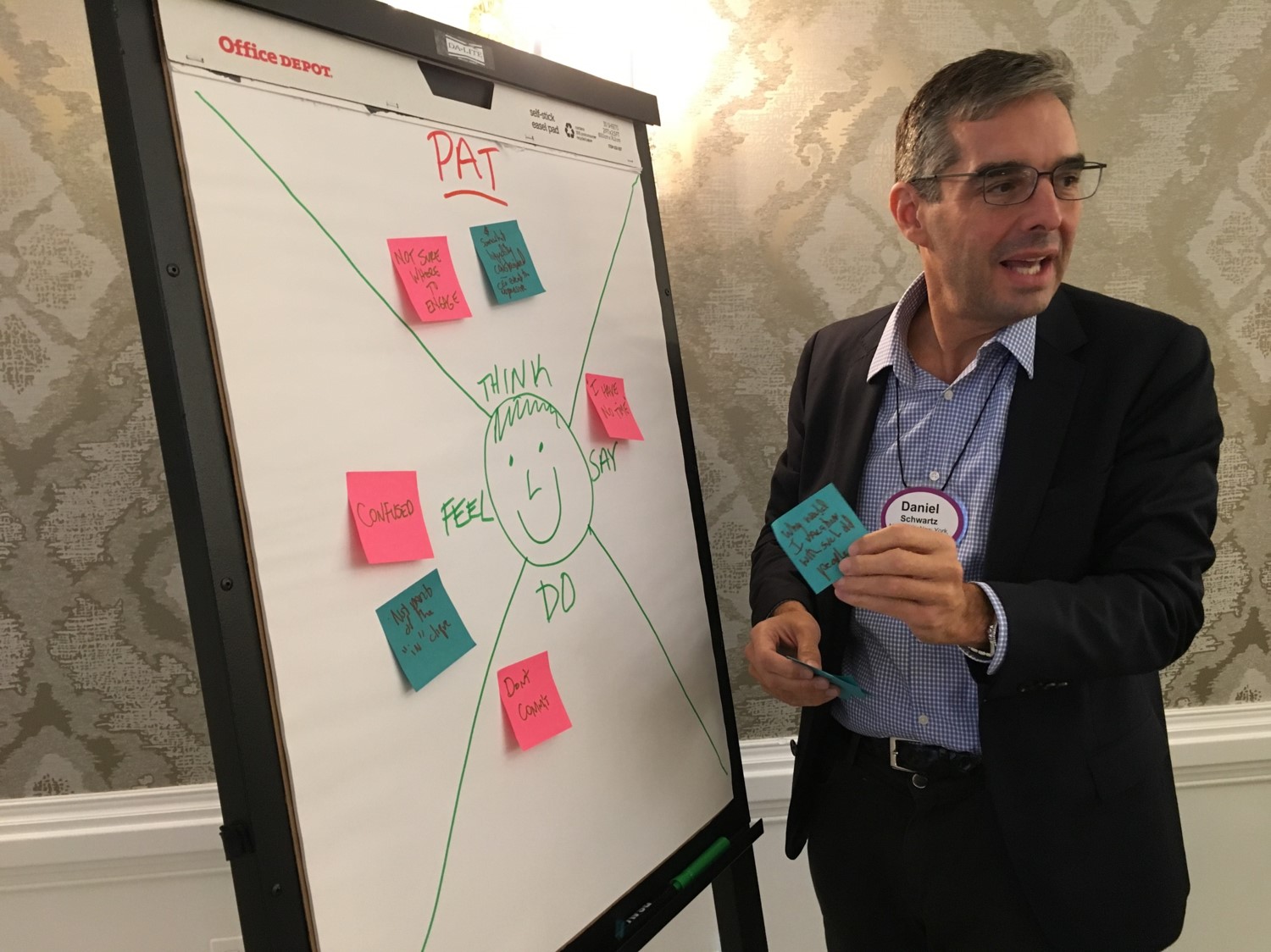The earliest known form of visual communication was cave painting in southern France around 40,000 years ago. About 37,000 years later, hieroglyphics were introduced, giving some structure to this art form, launching an entirely new system of communications. The 18th century brought us lithography, which meant we could share communications on a broader scale. And the pace of progress has evolved rapidly ever since—printing press, mass media, Internet—increasingly powerful and expansive new ways to pass stories to one another. Cave paintings, at global scale.
The paradox is that with an exponentially greater number of ways for brands to communicate today, consumers are drowning in messages. As marketers today, we are faced with the critical need to cut through the very clutter we create.
Digital marketing experts estimate that most Americans are exposed to anywhere between 4,000-10,000 ads daily
Consumers spend more than 5 hours a day on their cellphones, where they also have twice as many interactions with brands as anywhere else
Including the word “video” in an email subject line increases click-through rates by 13% and video is one of the top shared pieces of content on social media
90% of web consumers say that a video helps them make a decision to buy a business' product or service
Today’s marketing rule of thumb suggests we have 3-6 seconds to capture someone’s attention
Thankfully, we humans possess a secret weapon for today’s frenetic world of communications. Our brains have tremendous capacity to process what our eyes see (and transmit to our brains). Not only do our brains translate images into information well, our brains do this quickly. A team of neuroscientists from MIT found that our brains have the ability to process images 60,000 times faster than text, and the human brain can process entire images in less than one second (in as few as 13 milliseconds, according to the research).
There’s more. People are more likely to remember concepts when they are presented as images rather than words. Research shows when people hear information, they’re likely to remember 10% of that information 3 days later. However, if a relevant image is paired with the same information, people retain 65% of the information 3 days later.
Brands can tap this secret superpower. Because the human mind processes things in images, visual communication is the most effective way of sharing information. When marketers choose visual communications to tell their brand story—whether through images, videos, illustration, graphics and other design choices—we increase our chances of people seeing, understanding and remembering more.
This is a big reason we encourage people to sketch their ideas during our innovation workshops. Even a visual prototype can communicate volumes, and do a better job than a written description in engaging someone in a conversation, about the ideas we want to communicate.
There are caveats, of course. To be successful, we need to be thoughtful and strategic. To be effective, visual communications need to be:
Relevant. They need to meet people where they are (physically, emotionally and whenever they are on their brand journey with you). Visual communications should reflect something that matters to them.
True. What you showcase needs to true about your brand, service, product or experience. People need to believe what they see for visual communications to be credible.
Differentiating. It’s critical to stand apart so that people can find and choose your brand from a sea of options. When identifying distinguishing characteristics of your brand, it’s also important to keep in mind your competitive set may not just be others in your category. We are often competing for the heart and mindshare of people who are making choices a
Appealing and entertaining. Videos are an especially powerful form of visual communications because we can engage people through entertainment. Videos grab peoples’ attention and hold it longer, allowing additional opportunity to engage them further in meaningful brand-inspired content.
Authentic and Purposeful. These two go hand in hand. With so much more access to information people are demanding more from brands. In milliseconds, people are asking themselves: are those real people (or people who posed for a stock photo)? What am I supposed to do with this information? Brene Brown might be the greatest thing that’s happened in the vulnerability market. When people know you are being authentic—with your intention and action—they are more likely to trust you. This is a cornerstone for building enduring relationships with your customer.
There are a LOT of messages flowing to the people we aspire to reach, across many media. People have a secret superpower for taking in the many stories they see. And we have the ability to tap into this superpower with strategic visual communications. Visual communications allow us to break through the clutter with purposeful, authentic and differentiated visuals. And when we do that, the possibilities for engaging new audiences and engaging our current audiences more deeply are endless.
We love telling brand stories with visual communications. Drop us a line if you’d like to explore how to tell your brand story in visually powerful new ways.



